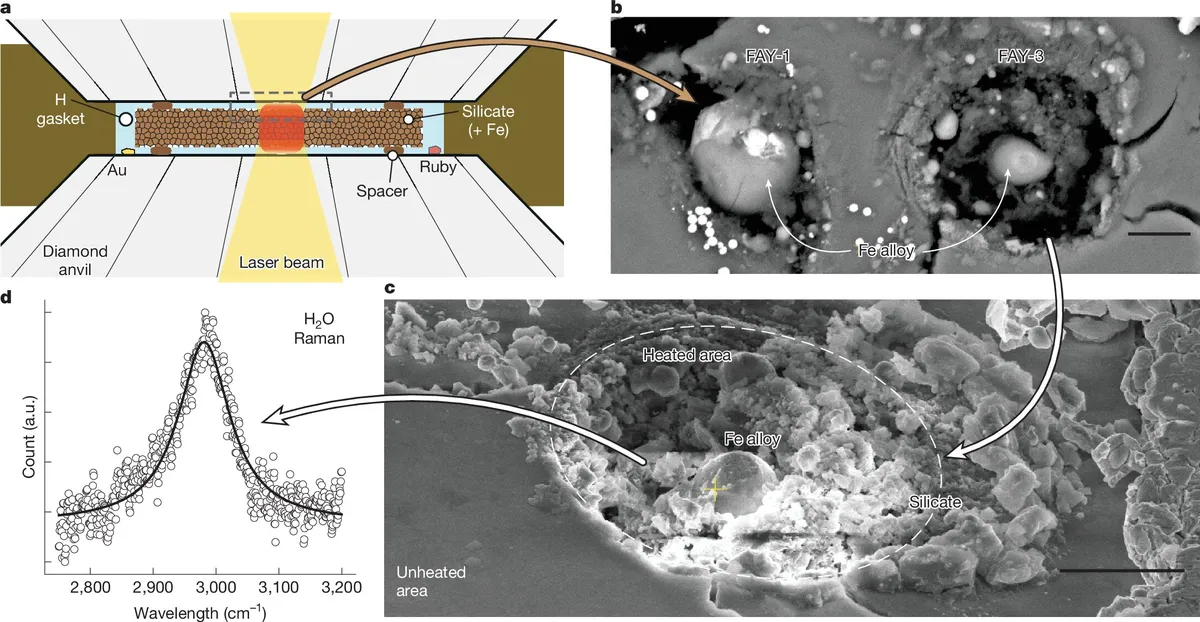
As the exploration of our galaxy continues to unveil a plethora of exoplanets, scientists are frequently met with discoveries that challenge existing theories. A recent study published in the prestigious journal Nature provides insights into a perplexing phenomenon: the presence of water on exoplanets, particularly those classified as sub-Neptunes, even in conditions where it seems implausible.
Sub-Neptunes are a unique category of exoplanets that fall between the sizes of Earth and Neptune. These planets typically possess a rocky core enveloped by a layer of hydrogen or water. This formation process aligns with the theory that these planets originate further from their host stars, where conditions are conducive to ice formation. However, some sub-Neptunes are located much closer to their stars, where high temperatures would typically prevent the retention of water on their surfaces.
While it is understood that some planets may acquire water through impacts from comets and asteroids, this explanation fails to account for the significant quantities of water observed on these sub-Neptunes. Previous research indicated that while hydrogen could reduce iron in silicates to produce water, only minimal amounts would be generated under the extreme pressures found on these planets. This raised the question: how can such large amounts of water exist on sub-Neptunes?
The prevailing theory regarding the existence of water on sub-Neptunes suggested that these planets formed beyond the snow-line and migrated inward. However, the new study proposes a groundbreaking alternative: these planets may generate water from their own rocky cores and hydrogen atmospheres. The authors of the study provide experimental evidence indicating that reactions between warm, dense hydrogen fluid and silicate melt can release silicon from the magma, leading to the formation of alloys and hydrides at high pressures.
They state, “We found that oxygen liberated from the silicate melt reacts with hydrogen, producing an appreciable amount of water up to a few tens of weight percent, which is much greater than previously predicted based on low-pressure ideal gas extrapolation.” This revelation suggests that the intense pressures on sub-Neptunes, reaching up to 10,000 times that of Earth's atmosphere, allow the silicate rock to exist in a magma state. Consequently, oxygen becomes available to react with hydrogen, resulting in substantial water production.
The findings from this study also shed light on the relationship between hydrogen-rich and water-rich exoplanets. As hydrogen is utilized to create water, a planet transitions from being hydrogen-rich to water-rich. The authors explain that hydrogen-rich sub-Neptunes could serve as precursors to water-rich sub-Neptunes and even super-Earths. The presence of a retained hydrogen atmosphere over a water-rich layer could signify that hycean worlds—planets with both hydrogen and water—may be more common than previously thought.
This new perspective on water formation on exoplanets carries significant implications for scientists. It challenges the notion that water-rich planets must originate far from their stars, suggesting that such planets could be more prevalent and exist in unexpected regions. This expanded understanding also influences the search for extraterrestrial life, as it broadens the potential for identifying worlds with water.
Future research will likely involve a more diverse range of planetary materials and conditions to explore whether similar processes occur on various types of planets. Additionally, observational studies can enhance the interpretation of exoplanet atmospheric data, particularly in the context of detecting water. A related commentary on this research was also published in Nature, highlighting the importance of these findings in the field of planetary science.